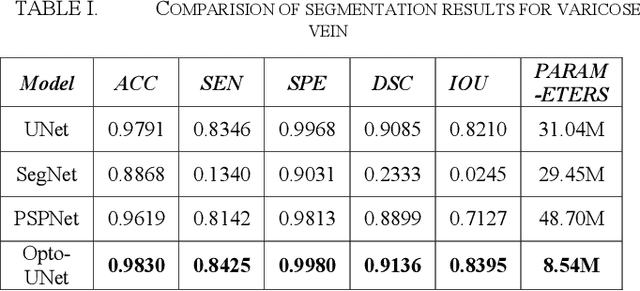Opto-UNet: Optimized UNet for Segmentation of Varicose Veins in Optical Coherence Tomography
Paper and Code
Mar 20, 2023



Human veins are important for carrying the blood from the body-parts to the heart. The improper functioning of the human veins may arise from several venous diseases. Varicose vein is one such disease wherein back flow of blood can occur, often resulting in increased venous pressure or restricted blood flow due to changes in the structure of vein. To examine the functional characteristics of the varicose vein, it is crucial to study the physical and bio mechanical properties of the vein. This work proposes a segmentation model Opto-UNet, for segmenting the venous wall structure. Optical Coherence Tomography system is used to acquire images of varicose vein. As the extracted vein is not uniform in shape, hence adequate method of segmentation is required to segment the venous wall. Opto-UNet model is based on the U-Net architecture wherein a new block is integrated into the architecture, employing atrous and separable convolution to extract spatially wide-range and separable features maps for attaining advanced performance. Furthermore, the depth wise separable convolution significantly reduces the complexity of the network by optimizing the number of parameters. The model achieves accuracy of 0.9830, sensitivity of 0.8425 and specificity of 0.9980 using 8.54 million number of parameters. These results indicate that model is highly adequate in segmenting the varicose vein wall without deteriorating the segmentation quality along with reduced complexity
 Add to Chrome
Add to Chrome Add to Firefox
Add to Firefox Add to Edge
Add to Edge